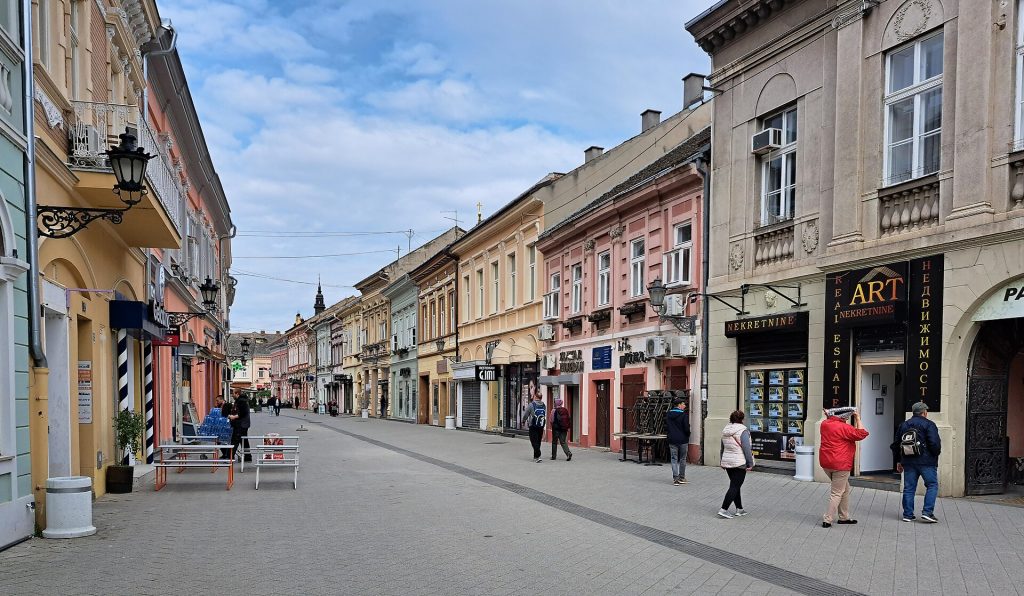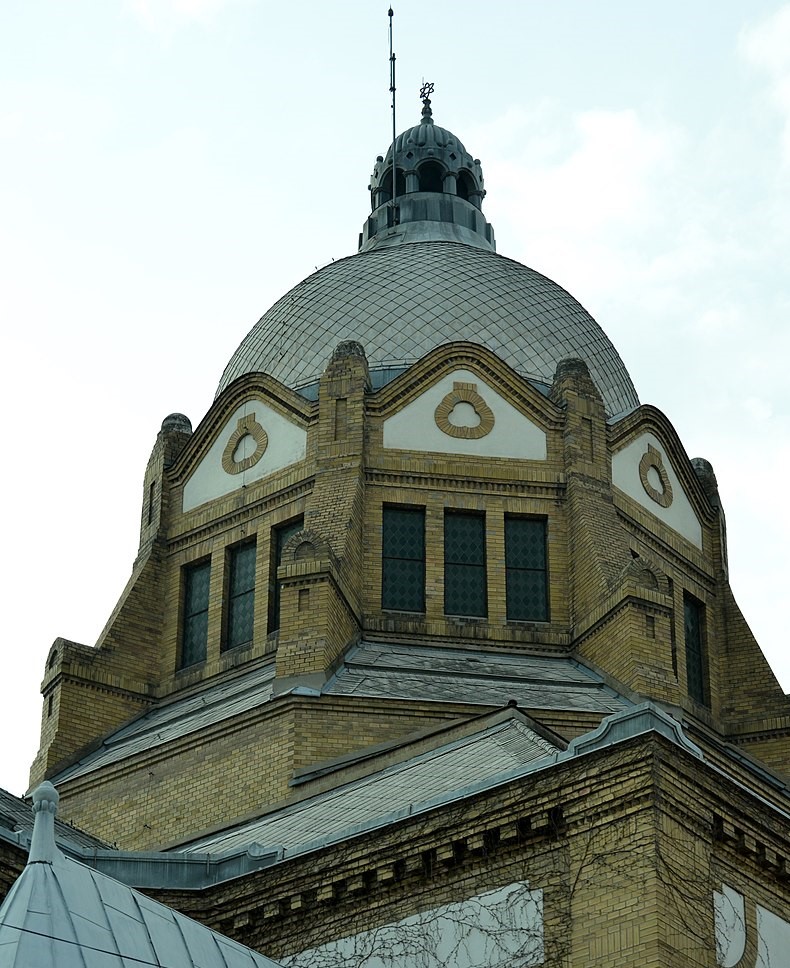
The Jewish community of Voivodina’s capital was, until World War II, one of the most prosperous in all Yugoslavia. Present since the city was founded in the late seventeenth century and 4,000 members strong before its extermination, the community was keen on building structures to rival those of other ethnic groups in this majority-Hungarian Catholic city (it belonged to the Austro-Hungarian Empire until 1918).

The Municipal Museum of Novi Sad , set up in the former Petrovaradin fortress, has a collection of relics gathered from the Celarevo archaeological site, located around eighteen miles west of the city on the shores of the Danube.
Hundreds of brick fragments bearing various symbols (menorot, shields of David, Hebrew markings) are on display here; they date to the late eighth and early ninth centuries, when the region was under domination by the Avars. Researchers have advanced the hypothesis that this people of Mongolian origin had been influenced by the Khazars of Crimea, a tribe that had itself converted to Judaism during the eighth century.

Built in 1909 in the so-called “Neolog” style (modernist Ashkenazic, as opposed to Orthodox), the synagogue is the work of Hungarian architect Lipot-Baumhorn, to whom we owe forty-some synagogues in eastern Europe.
It remains one of the largest synagogues in Central Europe, with a dome 120 feet high and 40 feet wide, a three-nave basilica, and a seating capacity of 900. Along with the adjacent buildings that housed Jewish community activities (mikvah, slaughterhouse, school, retirement home, orphanage, cultural center) built several years later, it was spared during the war by its Hungarian and German occupants.
This was not the case for its people, however: the synagogue was used as a temporary concentration camp for Jews of the region before their deportation to various death camps.

After the war, when Novi Sad contained no more than 300 Jews, community leaders negotiated with Yugoslavian authorities for the donation of the synagogue, whose excellent acoustics were underscored by cantor Mauricius Bernstein.
The temple has served as a concert hall ever since. Services held here are of only secondary concern. Renovation projects on the site from 1985 to 1991 have uncovered the stone Decalogue of a previous synagogue built here in the late eighteenth century.
The synagogue is now only used occasionally, mainly for Yom Kippur. In order to meet the needs of the community, the synagogue is rented out for cultural events.
In 2025, just over 600 Jews live in Novi Sad, making it the 2nd largest Serbian community after Belgrade.
Beside the Danube, a monument honors the memory of the city’s thousands of inhabitants, both Jewish and Serbian, shot down or thrown in the river by Hungarian militias on 23 January 1942, in revenge for an assassination committed by the Resistance.
The city also has a Jewish cemetery .